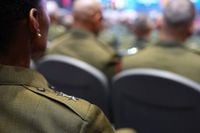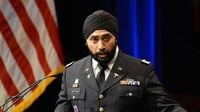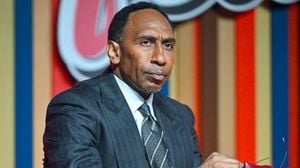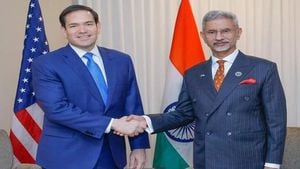On October 1, 2025, Defense Secretary Pete Hegseth delivered a sweeping address at the Marine Corps base in Quantico, Virginia, that has sent shockwaves through the U.S. military and beyond. Speaking before hundreds of military leaders and their chief enlisted advisers, Hegseth laid out a vision for the armed forces that sharply diverges from decades of military tradition as a catalyst for social change. His remarks, policies, and the immediate fallout have sparked heated debates about the future of diversity, gender equality, and religious freedom within America’s armed services.
For generations, the U.S. military has often led the nation in cultural and social transformation. According to AP, President Harry S. Truman’s 1948 order to desegregate the armed forces preceded the Supreme Court’s landmark Brown vs. Board of Education decision by six years. The military, despite its own long struggles with segregation, became one of the first major American institutions to integrate, setting a precedent for the rest of society. As Ronit Stahl, associate professor of history at the University of California, Berkeley, explained, “The military has often been ahead of at least some broader social, cultural, political movements. The desegregation of the armed forces is perhaps the most classic example.”
Women, too, have fought for and won expanded roles. The Women’s Armed Services Integration Act of 1948 granted them full status to serve, though restrictions on combat roles persisted until 2015. Over time, policies evolved: the ban on gay and lesbian service members was repealed, and women were allowed to serve in all combat positions. “The military has always had to confront the question of social change and the question of who would serve, how they would serve and in what capacity they would serve,” David Kieran, distinguished chair in Military History at Columbus State University, told AP. “These are not new questions.”
Yet Hegseth’s message was unequivocal. He criticized what he called decades of decay driven by “foolish and reckless politicians,” vowing to end what he labeled as the military’s “woke department.” In his words, “The military has been forced by foolish and reckless politicians to focus on the wrong things. In many ways, this speech is about fixing decades of decay, some of it obvious, some of it hidden. Foolish and reckless political leaders set the wrong compass heading, and we lost our way. We became the woke department, but not anymore.”
One of Hegseth’s most controversial moves is his overhaul of military grooming standards. As reported by Task & Purpose, Hegseth declared, “Today at my direction, the era of unprofessional appearance is over. No more beardos. The age of rampant and ridiculous shaving profiles is done.” This policy change signals a return to pre-2010 standards, generally not authorizing facial hair waivers except in limited cases. For over a decade, religious accommodations allowed Sikh, Muslim, Christian, and Norse Pagan service members to maintain beards as a tenet of faith. Now, under Hegseth’s guidance, such waivers will be rare and limited to non-deployable roles with minimal risk of chemical attacks or firefighting duties. Service members must provide documentation of the sincerity of their beliefs, and approvals will be “limited to non-deployable roles with low risk of chemical attack or firefighting requirements,” according to a Pentagon memo dated September 30.
The Sikh Coalition, a leading advocacy group, responded with alarm: “We are angered and deeply concerned about Hegseth’s comments about grooming standards. As our nation’s largest employer, what happens there affects the religious rights of Sikhs throughout the public and private sector. Time and time again, Sikhs have shown that exercising their freedom of religion — one of the foundational rights that members of the military fight to uphold — does not make them less capable of honorable and effective service.” The uncertainty has prompted intense discussion among service members and veterans, with many watching closely to see how the new guidance will be implemented across the military’s branches.
The numbers, while incomplete, hint at the scale of change. The Marine Corps reported granting 50 out of 101 religious accommodation requests for beards since 2020, with new provisions since July 2024 allowing temporary removal of accommodations based on operational necessity. The Navy approved 53 religious accommodations for fiscal year 2025 as of February 27, and 334 in fiscal year 2024, though it does not specify how many were for beards. The Army and Air Force handle waivers on a case-by-case basis, with the Air Force delegating authority to the lowest appropriate level. According to Task & Purpose, it remains unclear whether the new standards will reduce the number of religious accommodations granted, but the climate is one of heightened scrutiny and concern.
Hegseth’s approach extends beyond grooming. In the same Quantico address, he announced new military fitness standards, declaring that every combat position would “return to the highest male standard” of physical fitness. “If that means no women qualify for some combat jobs, so be it,” he said, while stressing that the military would continue to welcome women into its ranks. “I don’t want my son serving alongside troops who are out of shape, or in combat units with females who can’t meet the same combat arms physical standards as men,” Hegseth continued. “This job is life and death. Standards must be met.”
These remarks reignited long-standing debates about gender equality in the armed forces. Female veterans and advocates quickly pointed out that combat roles have been subject to gender-neutral standards since women were allowed to serve in all such positions in 2016. Elisa Cardnell, CEO of the Service Women’s Action Network and a Navy veteran, told AP, “It seems to me that really that what he’s asking for, what he wants to happen, is already how it works. Women have been allowed to be in combat roles, in all roles now, since 2016. In that time, those standards have always been gender neutral for combat roles. They were never lowered when women were offered the opportunity to join those career paths.”
Despite these facts, Hegseth’s comments have fueled fears that his policies are designed to push women out of certain roles. Rep. Chrissy Houlahan (D-Pa.), an Air Force veteran and member of the House Armed Services Committee, said on CNN, “You can’t have it both ways. You can’t have ‘standard standards’ and then ‘male standards.’ Either it’s a standard or it’s not.” She challenged Hegseth to clarify what would happen to women currently serving in such positions. Rep. Mikie Sherrill (N.J.), a Navy veteran, accused Hegseth of escalating a “war on women in the military, despite presenting no evidence that women cannot ably serve in combat positions.”
Hegseth’s record has only intensified concerns. Since taking office, he has removed a string of female leaders from top posts, including Adm. Lisa Franchetti, Air Force Lt. Gen. Jennifer Short, and Vice Adm. Shoshana Chatfield. There are currently no female four-star officers on active duty or in pending appointments for top roles. Amy McGrath, a former Marine Corps fighter pilot, wrote, “He claimed the military needs to ‘return to the male standard’ in combat jobs (of 1990!), but here’s the truth: there has never been a separate male and female standard. When women entered combat roles, one standard was set, and we’ve been meeting it ever since.”
For many, the current moment is a crossroads. Matthew Delmont, a professor of history at Dartmouth College, told AP that the military “has moved faster and farther than almost any other organization in thinking about issues of racial equality, and then later thinking about the issues related to gender and sexuality.” Yet the new policies—and the rhetoric behind them—suggest a sharp pivot away from that legacy. As debates continue, the future of diversity, inclusion, and religious freedom in the U.S. military hangs in the balance.
In a time of rapid change and deep division, the U.S. military once again finds itself at the center of America’s ongoing struggle over who serves, how they serve, and what it means to serve together.





